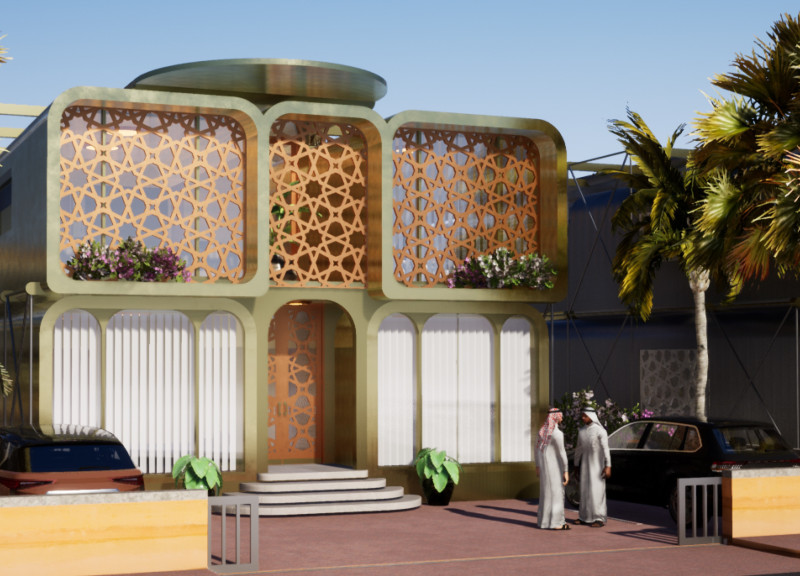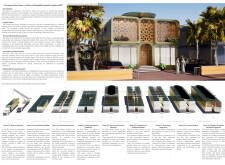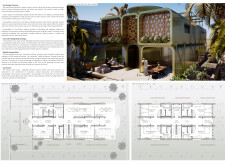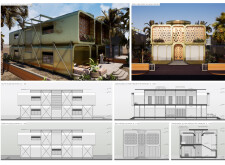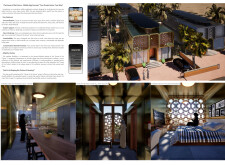5 key facts about this project
## Project Overview
Located in Dubai, the "House of the Future" presents a novel approach to housing centered on adaptability, sustainability, and cultural relevance. This modular dwelling is designed to integrate effectively within diverse urban contexts without compromising aesthetic or functional qualities. Employing the Adaptable Nomadic Tectonics (ANT) Construction System, the project addresses logistical and construction cost challenges through its modular design.
### Modular Design and Material Innovation
The core structure consists of individual modules created with an advanced sandwich panel system. This system incorporates materials such as aluminum, thermal insulation, and acoustic insulation, ensuring both thermal efficiency and sound quality. The design respects local architectural traditions, employing decorative elements inspired by Emirati heritage. The panels provide rapid deployment capabilities, making the dwelling suitable for a range of scenarios, from temporary housing to permanent residences.
### Sustainability and Cultural Relevance
A central focus of the project is its commitment to sustainability through the use of energy-efficient systems, including solar panels aimed at reducing the environmental impact. Additionally, eco-friendly materials have been selected to comply with contemporary sustainability standards. The architectural design fosters a connection to Emirati culture, emphasizing open-air spaces and communal areas that enhance social interaction within the community and support traditional family structures. The integration of smart technology allows occupants to customize their living spaces according to their evolving needs, reinforcing the concept of flexible living environments.


